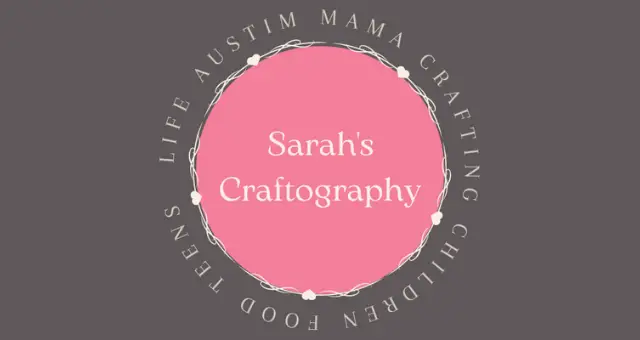Have you ever wondered how to create a sensory-friendly Halloween that your kids will actually enjoy?
For many families, this holiday is filled with excitement, but it can also come with big challenges.
The flashing lights, loud noises, crowded streets, and itchy costumes that other children may find fun or spooky can be overwhelming for kids with autism or sensory processing differences.
Instead of laughter and candy, the night can sometimes bring tears, meltdowns, or a quick retreat back home.
The good news is that it doesn’t have to be this way.
With a little planning, creativity, and compassion, you can transform Halloween into a celebration that is calm, joyful, and welcoming for everyone.
In this post, I’ll be sharing practical and easy sensory-friendly Halloween ideas kids will love, from costumes to trick-or-treat alternatives and everything in between.
So grab your candy bucket and your imagination, because we’re about to dive into a Halloween that shines in a whole new way.
The Spooky Side of Sensory Overload
Halloween has never been as simple as buying costumes and hitting the sidewalks with my kids.
For Trinity, costumes were never exciting, they scared her.
The textures were uncomfortable, and anything tight made her feel trapped.
Alivia’s needs are different.
She can’t stand masks or heavy makeup, but she adores blow-up costumes.
Most of the time, we keep it simple, something like a black sweat outfit with butterfly wings, a touch of glitter spray in her hair, and maybe a little soft makeup.
We’ve also done cat ears with a little powdered nose, or dog and fox headbands with small tails.
These little touches let her join the fun without feeling weighed down by itchy fabrics or overwhelming face paint.
And I know I’m not alone in this.
Many families raising children with autism or sensory differences face the same struggles.
Costumes that seem adorable on store shelves often feel unbearable once they’re on.
Motion-activated decorations that make other kids laugh can send some running for cover.
Even trick-or-treating, something so simple for most, can become exhausting with crowds, flashing lights, and sudden noises.
If you’ve ever felt like Halloween is “too much,” you’re not failing your child.
You’re just learning, like I am, how to adapt the holiday to fit their needs.
That’s why we’ve often chosen alternatives: smaller trunk-or-treats, earlier walks, or even staying home to create our own fun.
Some of our favorite Halloweens have been when we decorated pumpkins, made special treats, bobbed for apples, or played sensory games that fit what my kids could handle.
I’ve learned that pride doesn’t come from how long we lasted on the block or how much candy we brought home.
It comes from watching our kids step out of their comfort zones, even for a moment, and still finding joy in their own way.
And isn’t that what most of us want on Halloween, not perfection, but memories our kids can actually enjoy?
Boo-tifully Sensory-Friendly Ways to Celebrate
In our house, Halloween fun usually starts with sensory bins.
Over the years, I’ve dyed rice in shades of black, orange, green, and purple, then mixed in tiny pumpkins and spooky trinkets from craft stores.
My kids love digging through them, and maybe yours do too.
If your child enjoys exploring textures at their own pace, sensory bins can be a safe and exciting way to celebrate.
And if slime or kinetic sand is more their style, hiding little objects inside can turn playtime into a treasure hunt, just skip the sticky stuff if your kids are like mine.
Pumpkin guts?
Definitely not a favorite in my house.
Maybe your kids don’t enjoy that messy feeling either.
Instead, we stick to painting and decorating pumpkins.
It’s become a tradition that lets my kids be creative without the stress.
And yes, crafting in our house is always messy, but isn’t that part of the fun? (fun Halloween themed table cloths are great for the messes!)
The glitter everywhere, the paint smudges, the chaos, it all turns into memories that stick long after the night is over.
We’ve also learned that big, noisy community events aren’t always a good fit.
That’s why we stick to smaller trunk-or-treats or calm library gatherings.
Preparing my kids ahead of time helps a lot, and I always scout out the exits, because sometimes leaving early is the best choice.
If you’ve ever had to do the same, you know it doesn’t mean you failed, it just means you know your child’s limits and you’re honoring them.
At home, we’ve created some of our favorite Halloween memories.
We’ve bobbed for apples, played sensory guessing games, gone on flashlight scavenger hunts, and even set up our garage with soft lights, a fog machine, a little dance floor, and door prizes.
The kids still talk about that night, and honestly, it felt just as magical, maybe even more so, than walking door to door.
That’s the beauty of adapting Halloween to be sensory-friendly.
It’s not about doing less; it’s about creating moments that matter.
For us, that looks like smaller spaces, calmer settings, and traditions tailored to our kids.
For you, it might look a little different, and that’s okay.
So here’s something to think about: if you could reinvent just one Halloween tradition in your family to make it calmer, safer, or more fun, what would it be? 🎃✨
Comfy Costumes Kids Actually Love
When it comes to Halloween, the costume is usually the star of the show, but for kids with autism or sensory sensitivities, it can also be the hardest part.
What looks adorable on the store rack might feel scratchy, hot, or overwhelming once it’s on.
That’s why comfort has to come first.
In our house, we’ve learned this lesson through trial and error.
Trinity never liked tight, itchy costumes, so we stuck with soft, breathable fabrics, think cotton or fleece.
She always gravitated toward soft cotton or fuzzy outfits, and that taught me early on that comfort has to come first.
One year, though, Trinity surprised me, she wanted to be a zombie.
Instead of a mask or heavy makeup, we got creative.
I tore up an old dress, rubbed it in the dirt, and used just a little makeup, smudges with eyeliner, lipstick “blood,” and dark shading to give it a spooky look.
It was light enough for her to tolerate but still gave her the zombie style she wanted.
That moment reminded me that sometimes, with flexibility and creativity, our kids surprise us with what they can handle.
Alivia is different, she loves blow-up costumes, or something simple like a black sweat outfit paired with butterfly wings, glitter in her hair, or fun headbands with cat, dog, or fox ears.
For her, the less fabric and face paint, the better.
But costumes aren’t just about materials, they’re about environment too.
Think about where your child will actually be wearing it.
For us, bulky or hot costumes like blow-ups had to wait until we got to the event, because riding in the car with them was too much.
Most of the time, though, my kids could wear their costumes in the car just fine.
Weather also plays a big role.
Here in Ohio, Halloweens are usually cold, rainy, and sometimes even snowy.
I’ve had to layer warm clothes under costumes many years, but I’ve also had to prepare for kids getting too hot once they’re moving around.
Having a bag or a spot for kids to shed a piece of their costume when they’re done with it has saved us more than once.
And then there’s the social side.
My kids love to walk around, but chaotic or loud environments can make them shut down, especially when people bump into or touch them.
That’s why I always carry a backup option, like cat ears or something small I can slip into a bag, so they still feel festive if the main costume becomes too much.
For every family, the goal should be the same: a costume that lets kids feel comfortable, included, and proud of how they look.
The “perfect” costume isn’t the one that wins contests, it’s the one that helps your child smile and enjoy the night.
So let me ask you: when it comes to Halloween, do you pick your child’s costume based on what looks the cutest, or what feels the most comfortable, and how has that choice made a difference for your family? 🎃👻
Ghoul-Proof Trick-or-Treating Tips
Trick-or-treating can be one of the most magical parts of Halloween, but for kids with autism, it sometimes takes a little extra planning to keep it fun instead of overwhelming.
In our house, we start preparing early.
We’ve even practiced saying “trick or treat,” “please,” and “thank you” ahead of time.
A great resource for families is the book Jamie’s First Halloween, which helps children with autism understand what to expect in a fun and gentle way.
Timing is everything for us.
We usually head out after dinner but before bedtime so the kids can enjoy themselves and still have plenty of time to wind down afterward.
Starting early also helps us beat the big crowds and noise.
When we do go door-to-door, we stick to friendlier neighborhoods where people are outside, chatting, and patient.
That kind of community feel makes all the difference.
Socially, my kids prefer to keep it small, usually just me and them.
No big groups, no extra kids, because that’s just too much stimulation.
Still, we’ve had wonderful interactions with neighbors.
Even on nights when I’ve had to explain, “I’m sorry, my child can’t say trick-or-treat right now,” people have usually been kind and understanding.
On the rare occasion when someone wasn’t, we simply moved along without making a big deal of it.
Of course, every parent knows the signs, when hyper energy starts turning into whining or meltdowns, it’s time to wrap things up.
I usually set a gentle boundary: “Two more houses and then we’re heading to the van.”
Afterward, we’ll sometimes drive around to look at the lights, which helps shift the focus from candy to calm.
I also always bring our essentials: noise-canceling headphones, a favorite sensory toy, and real snacks, because let’s be honest, candy does nothing for overstimulation.
One of my favorite trick-or-treating memories was in a little cul-de-sac where everyone was extra friendly.
The girls had the best time, the people were kind, and it reminded me that trick-or-treating doesn’t have to be perfect to be magical.
And while this is what works for my family, I know every child on the spectrum is different.
Some kids thrive in group trick-or-treating with friends, while others do best one-on-one.
Some enjoy the costumes more than the candy, while others may just love being outside with all the excitement in the air.
There’s no one “right” way to do Halloween, only the way that makes your child feel safe, proud, and included.
So here’s something to think about: if you could change one part of the traditional trick-or-treating experience to make it more magical (and less stressful) for your child, what would it be? 🎃👻🍬
Sensory-Friendly Spaces for Spooktacular Fun
Halloween magic only works when kids feel safe.
For children with autism, that often means creating spaces that are calm, predictable, and comfortable.
In our house, safety looks a little different than it might for yours, but maybe you’ll recognize pieces of our story in your own.
Instead of ID bracelets or stickers, I’ve always used simpler options.
My kids’ trick-or-treat bags have their names on them, and I usually slip a piece of paper with our address into their coat pocket or bag, just in case.
My girls don’t like bracelets on their wrists, but that doesn’t mean they won’t work for other families, it’s all about what fits your child best.
When it comes to lights, my kids love glow sticks and wands, but not necessarily wearing them.
They’d rather wave a glow wand around than have something strapped to them, and that works for us.
Some kids, though, love glowing necklaces, light-up sneakers, or reflective patches, so it’s worth experimenting.
Anything that makes kids visible while still being fun gets a win in my book.
I always plan our route ahead of time.
We usually pick friendly cul-de-sacs where neighbors sit outside with candy and conversation, or smaller community events like church trunk-or-treats and library programs.
Knowing the environment ahead of time makes the night easier for everyone.
Flashing lights, jump-scare decorations, and loud noises are big triggers for my kids, so we steer clear of busy, chaotic areas.
Indoors or outdoors doesn’t matter much, they enjoy both, but weather and environment definitely play a role in how long we stay.
At home, my kids know they can retreat to their rooms if they get overwhelmed.
When we’re out, we’ve even come up with special words so they can tell me how they’re feeling.
Alivia uses the phrase “thunder popcorn” when she feels like she’s losing control, a silly but powerful way for her to communicate her needs quickly.
Finding these safe signals has been one of the best things we’ve ever done.
And that’s the real key: safe spaces look different for every child.
For some, it’s a quiet bedroom.
For others, it’s holding onto a favorite toy, or taking a walk with headphones.
What matters is honoring your child’s comfort so the night stays joyful instead of stressful.
So here’s a question for you: what’s one way you’ve created a safe space for your child on Halloween, whether at home, in the car, or out in the neighborhood, that other families might want to try too? 🎃✨👻
Wrapping Up the Spooky Fun
We’ve talked about costumes that don’t itch.
Calmer trick-or-treat routes.
Glow wands that light up the night.
And pumpkin crafts that keep little hands busy.
All of these can help make Halloween truly sensory-friendly.
If there’s one thing I hope you take away, it’s this: there’s no “one-size-fits-all” Halloween.
Every child on the spectrum has their own unique needs.
With a little creativity, patience, and planning, we can make memories that feel magical instead of overwhelming.
My kids have shown me year after year that Halloween isn’t about the biggest costume, the loudest party, or the fullest candy bag.
It’s about finding joy in the ways that work best for them.
Maybe your family sees yourself in our story.
Or maybe your child’s experiences look completely different.
Both are valid.
Both are beautiful.
And both deserve to be celebrated.
Now I’d love to hear from you! 🎃✨
What sensory-friendly tips, safe spaces, or fun traditions have helped your family enjoy Halloween?
Share your thoughts in the comments so we can learn from each other.
And if this post spoke to you, please share it.
The more we spread ideas, the more awareness we build.
Together, we can create a world where every child feels understood, included, and cherished on spooky nights like this.
So tell me, are you ready to help make this Halloween a little more magical for all our kiddos? 👻🍬🕸️
Halloween Legends, Recipes And Craft Ideas
The Legends Of Halloween
Have you ever wondered about the legends of Halloween? With so many spooky legends behind Halloween! I want to share a few of my favorites!
Horror Movies Sure To Set The Mood For Halloween
Are you looking for a horror movie that send chills down your spine to set the mood for Halloween? Check out these movies to watch!










